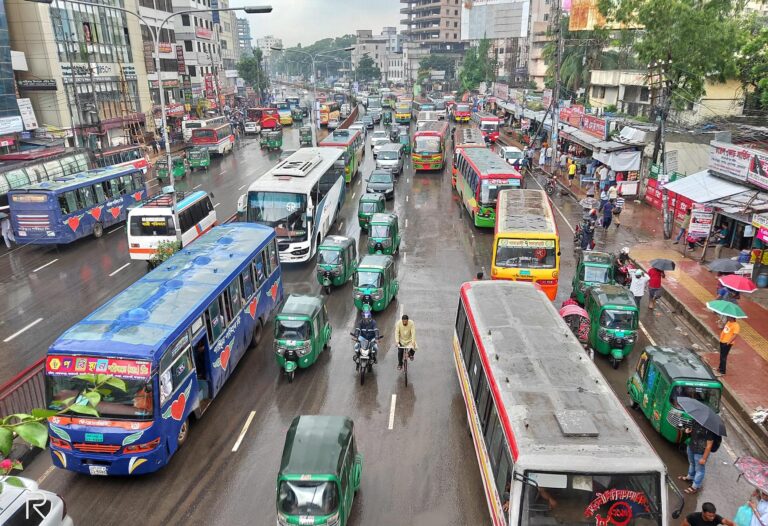Bangladesh appears to have concluded its delicate balancing act between India and China, signaling a potential shift in its foreign policy approach. According to a recent analysis by the Atlantic Council, while Dhaka may be stepping back from its traditional tightrope game between the two regional giants, maintaining a cautious and strategic posture remains essential. As Bangladesh navigates evolving geopolitical dynamics in South Asia, the need for careful diplomacy and measured engagement with both powers continues to be paramount.
Bangladesh Shifts Its Strategic Focus Amid India China Rivalry
Bangladesh’s recalibration in its foreign policy signals a pragmatic shift from its previous balancing act between India and China. As tensions escalate between the two regional giants, Dhaka appears to be prioritizing economic development and infrastructural investments over aligning explicitly with either side. This strategic pivot is underpinned by expanding partnerships beyond its immediate neighbors, aiming to capitalize on diverse sources of trade and technology while safeguarding national interests. The move reflects a nuanced understanding that overt favoritism could jeopardize economic gains and regional stability.
However, the challenge remains for Bangladesh to navigate the competing demands without compromising its sovereignty or becoming embroiled in geopolitical friction. It is essential for Dhaka to maintain flexibility through:
- Robust diplomatic engagement with both India and China to prevent misunderstandings.
- Strengthening multilateral ties with ASEAN and other global forums.
- Internal policy coherence that aligns economic and security priorities.
The stakes are high as Bangladesh seeks to harness opportunities from major infrastructure projects like the Belt and Road Initiative without alienating its immediate neighbor, India, whose own influence in South Asia remains significant.
| Factor | India | China |
|---|---|---|
| Economic Investments | Robust trade and connectivity projects | Largest infrastructure financier |
| Security Concerns | Border and maritime security focus | Strategic military partnerships expanding |
| Diplomatic Engagement | Shared cultural and historical ties | Rising influence through regional hubs |
Balancing Act Challenges in Dhaka’s Foreign Policy Landscape
Over the past decade, Dhaka’s foreign policy has often been described as a delicate balancing act between two Asian giants: India and China. However, recent moves suggest that Bangladesh may have shifted from this tightrope walk to a more defined alignment. While this may bring new opportunities, the strategic environment remains fraught with challenges. Dhaka must now navigate intensifying geopolitical pressures, evolving economic dependencies, and regional security concerns, all while safeguarding its sovereign interests.
Key challenges shaping this evolving landscape include:
- Maintaining economic leverage: Bangladesh relies heavily on both Indian investments and Chinese infrastructure financing, making diversification essential.
- Balancing security alliances: The growing presence of India’s security influence contrasts with China’s Belt and Road ambitions in the region.
- Managing regional perception: Staying neutral enough to avoid alienating either power while securing maximum benefits.
| Factor | India | China |
|---|---|---|
| Investment | Significant in energy & infrastructure | Massive projects under BRI |
| Security | Border cooperation & military aid | Limited direct military presence |
| Trade | Key export market | Growing import source |
Recommendations for Sustained Diplomatic Prudence and Economic Engagement
To maintain a balanced foreign policy that safeguards national interests, Bangladesh should adopt a multifaceted strategy emphasizing diplomatic prudence and economic diversification. Prioritizing transparent and consistent communication channels with both India and China will help prevent misunderstandings and reinforce mutual trust. Simultaneously, Bangladesh must deepen engagement with regional and global partners beyond these two giants, leveraging platforms such as BIMSTEC and the South Asian Association for Regional Cooperation (SAARC) to foster broader cooperation horizons.
Economically, Bangladesh’s leadership should focus on cultivating an environment conducive to sustainable investment by promoting regulatory reforms and infrastructure development. The country can benefit from targeted policies aimed at:
- Strengthening domestic industries to reduce overreliance on external supply chains;
- Encouraging innovation and technology exchanges with a diverse set of international players;
- Enhancing connectivity and trade facilitation to improve regional logistics and supply networks.
| Priority Area | Recommended Action | Expected Outcome |
|---|---|---|
| Diplomatic Channels | Regular high-level dialogues | Improved mutual understanding |
| Economic Diversification | Support SMEs & emerging sectors | Resilience against geopolitical shocks |
| Regional Integration | Active participation in multilateral forums | Expanded trade opportunities |
Insights and Conclusions
As Bangladesh navigates the evolving dynamics between two regional giants, its recent shifts signal a recalibration of foreign policy that seeks to balance economic opportunity with strategic prudence. While indications suggest that the country may be stepping back from its delicate India-China tightrope act, analysts caution that vigilance remains essential. In an increasingly complex geopolitical landscape, Dhaka’s ability to maintain constructive relations with both neighbors will be crucial to safeguarding its national interests and sustaining regional stability. The coming months will reveal whether Bangladesh can continue to deftly manage these competing influences or if new challenges will test its diplomatic resolve.




